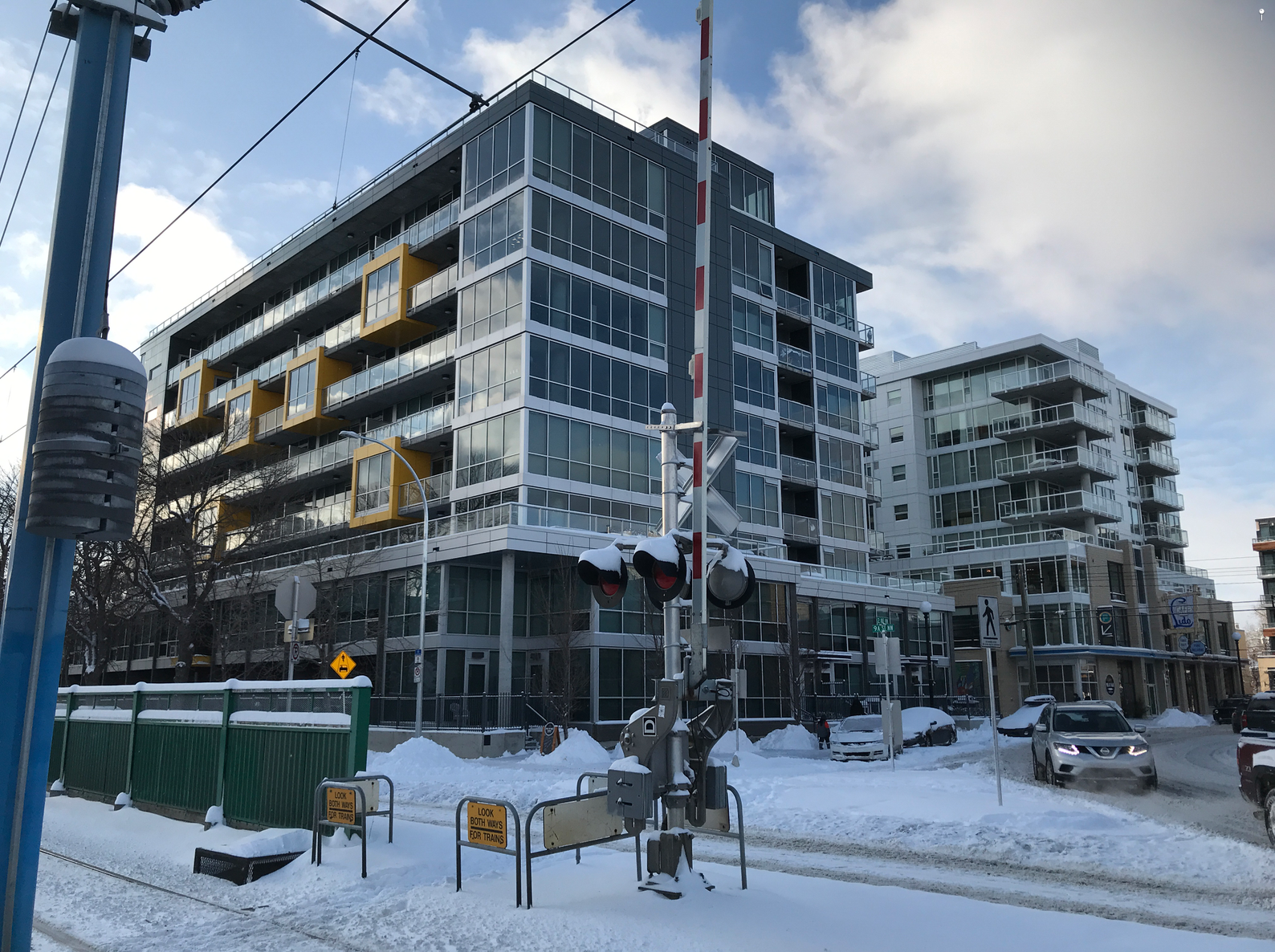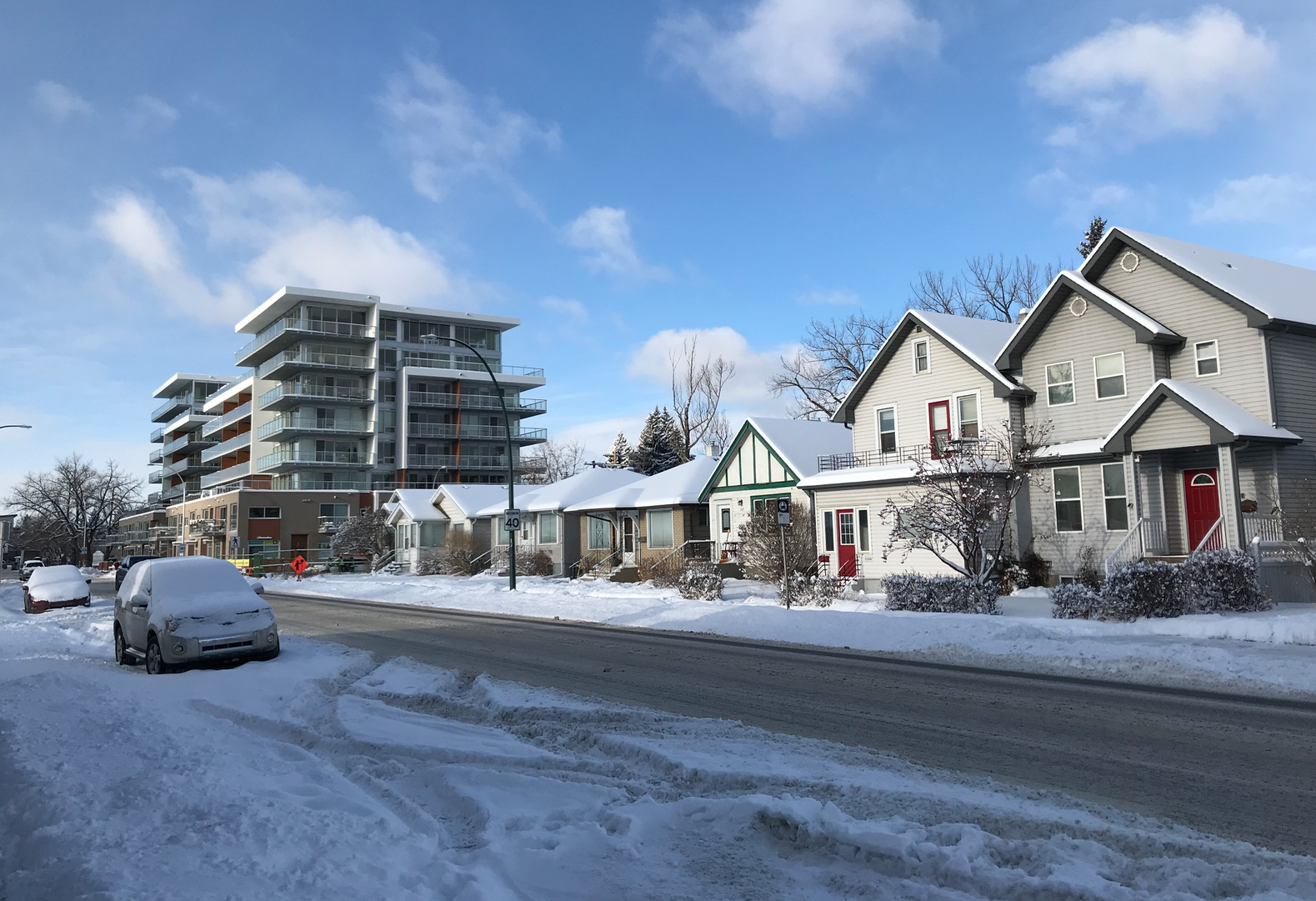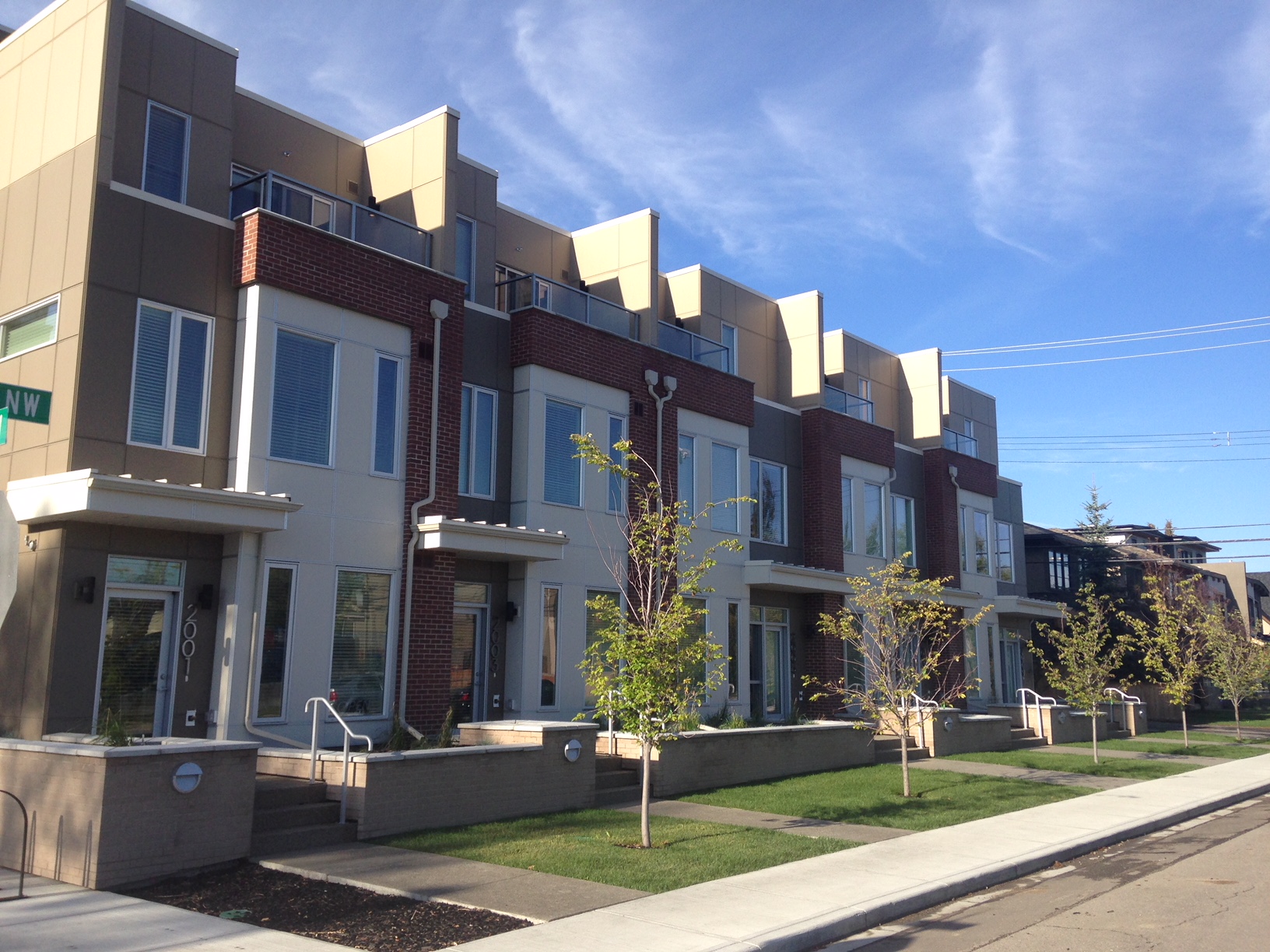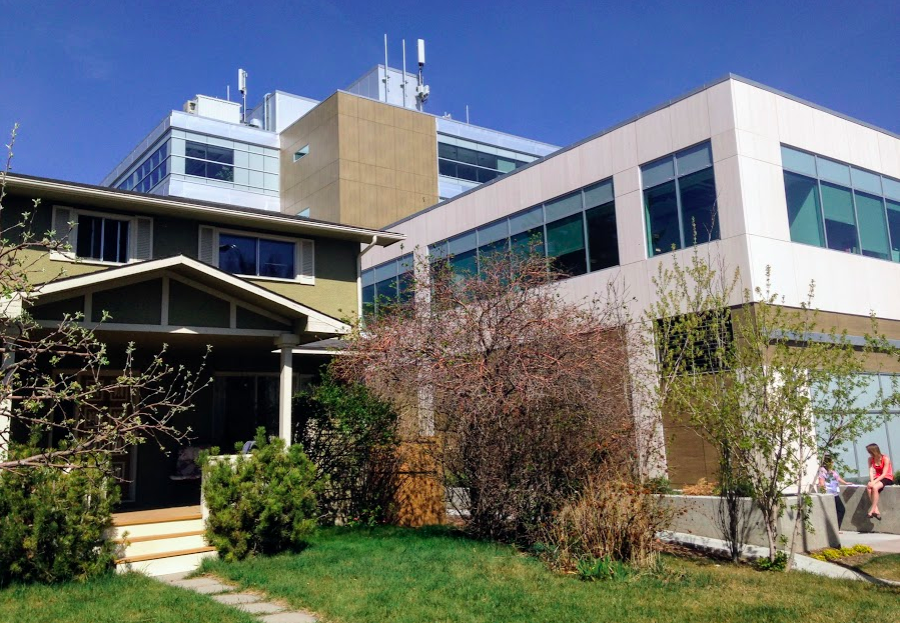Am I an urban densification hypocrite?
Yes I am a city building geek! Yes, I live in a detached 2,000 square foot home in an inner city community surrounded by detached homes, some old tiny cottage homes, but more and more by modern large infill homes some might call McMansions.
Large contemporary two and three storey infill homes are slowly replacing the mid-century bungalows in most of Calgary's inner-city communities.
And, yes I have and will continue to champion the benefits of older communities like mine becoming more dense and diverse residential buildings and office buildings with commercial uses at street level along transit routes.
And I, like thousands of urban planners, politicians, developers and architects have been advocating for decades the need for North American cities like Calgary to add more density - usually in the form of 4 to 12+ storeys residential and office buildings along major roads and transit routes and old malls in established suburban communities. And in some cases even higher than 12 storeys where it makes sense.
Meanwhile, I live in my relatively big house (only two of us have ever lived in it) with a front and back yard, two-car garage and still drive to most of my activities. For me, walking and cycling remains mostly a recreational not an everyday activity.
Yes, I feel guilty about that too!
As well, infill developers are strategically identifying sites for more intense densification like this project near Crowchild Trail.
Here is what the new condo with 45 new homes looks like today.
Another redesignation sign in West Hillhurst along Kensington Road at 19th St NW which has the potential to become a vibrant Main Street.
Am I a hypocrite….
Because I champion higher density development but live in a low-density home on a low-density street?
I believe most City Council members in major North American cities (maybe excluding larger urbanized cities like New York City and San Francisco) in detached single-family homes on streets without any major condo buildings. I have no empirical evidence for this.
Tell me I am wrong!
I also believe most senior urban planners (both private and public sector) live in single-family homes outside the City Centre.
Again, show me I am wrong.
When I sat on the Calgary Planning Commission, no members lived in condos or in dense communities, yet we were often approving major densification projects the local community was protesting. I believe the same is true for today’s Planning Commission.
Again, while I have no empirical data, I have informally gathered data over the past 20+ years by simply asking urban advocates where they live. Rarely have they said “in a high-rise condo in the city centre” or “in a mid-rise condo in an older community.”
Is it a case of urban densificationists saying, “do as we say, not as we do?”
Charles Olfert, a Saskatoon architect says “Ouch! Guilty as charged. But in fairness, we moved here in 1983 when there really wasn’t an alternative to the suburbs. Our main concerns were schools and an accessible home for our daughter. I am now working on the very early stages of two, new, substantial, mixed-use, inter generational, infill housing developments that could be places we might want to move to within the next 4-8 years. It helps ease the conscience. I think you are right. Most of our 40 city hall planning staff live in suburbs. Very few bike. However, our new mayor actually lives in a core neighborhood.”
I expect Olfert's situation is similar to that of the majority of Calgarians. I recently chatted with my millennial dental hygienist who lives in the Beltline in the Calla condo near the Lougheed House, but looks forward to moving to a house to raise a family as does her twin sister.
I know, not empirical data - keep reading.
New infill condo on 17th Ave SW is creeping west from Crowchild to Sarcee Trail. However, this is not new as there are several residential buildings taller than four storeys from the 70s and 80s.
Why do people hate density?
Most people hate tall buildings and would prefer to live in a detached home or perhaps a small complex of homes with both front and back yards. This time I do have some empirical evidence. In October 2017, Canada Mortgage Housing Corporation (CMHC) surveyed 2,507 Canadians who intended to buy a new home in the next two years.
When asked what type of home buyers were planning to buy, “single detached homes are preferred by the majority, especially by current owners where 74% expected to buy a detached home, Apartments and condos were second, followed by semi-detached houses including duplexes and townhomes.”
And, Calgary had the lowest percentage of buyers interested in buying an apartment condo of any of Canada’s major cities.”
The four colourful condo towers at the Brentwood LRT near the Co-op grocery store, and within walking distance to the University of Calgary were opposed by neighbours.
Human Scale
There is in fact lots of data, documenting that when it comes to urban living humans like what is called “human scale” buildings commonly thought of as being no taller than nine or 10 storeys – think Paris or Barcelona. Yet, it is rare a new Calgary condo project (even when it is under 10 storeys) proposed in older community next to single-family homes isn’t greeted by neighbours kicking and screaming about how this is going to ruin their neighbourhood.
Four examples are, St. John’s on Tenth and Ezra on Riley Park (both in Kensington), Legion (in West Hillhurst) and AVLI (in Inglewood). Eventually, all four got approved but not without a fight. Currently, two new battles are about to erupt - The Grid (in Inglewood) and Carlisle Group’s Glendale project. A recent visit to Hamilton and the same was happening that city and in Burlington.
The density advocates just roll their eyes, when they hear people’s concerns about parking, shadows, increased traffic and crime, or that the proposed development is out of context with the scale of the other nearby buildings.
While many densification advocates dismiss the neighbours’ concerns as a case of NIMBYism, I am beginning to wonder if it is the densificationists (planners, politicians and developers) who are the NIMBYist in that they are prepared to propose, approve and build high-density developments in locations as long as they are not in their backyards.
Indeed, I could be accused of this as I publicly supported the conversion of the single story Legion building in West Hillhurst to be redeveloped to accommodate an 8-storey condo and 4-storey office development in my neighborhood that was adamantly opposed by many in my community.
To me redevelopment of the Legion site made perfect sense. It is along a major bus route and within walking and cycling distance to downtown and just blocks to the Bow River pathway. There is an emerging main street along 19th Street NW and it is close to schools and a recreation center. Sounds like a recipe for an urban living node if I ever saw one.
But, full disclosure, it was 10 blocks away from my home so not exactly in my backyard.
Along 20th Ave NW from 14th St to 19th St you can see how the scale of housing evolves from mid 20th century to early 21st century. Note the height of the 3 storey condo building isn't any higher than the infill duplex.
Human scale condo on 19th St NW add to the potential of creating a vibrant main street with neighbourhood shops at street level along 19th St NW.
Experts love the mid-rise…
Jennifer Keesmaat, Canada’s current urban planning guru and former chief planner for the City of Toronto has been advocating the advantages of mid-rise buildings for infill projects along major roads and transit routes for many years. As has Brent Toderian, former Manager of Centre City Planning + Design in Calgary, Director of Planning, City of Vancouver and now an international urban development consultant. (FYI…when Toderian lived in Calgary, his home was n a low rise multi-family building in Inglewood; I don’t believe he even owned a car. In fact, I believe he took is first child home from the hospital on a city bus in Vancouver. He is no hypocrite!)
The rationale: mid-rise buildings have the ability to synergistically connect with existing suburban development as their “human scale” integrates better with single-family homes while still creating the density needed to support better transit service. Mid-rise buildings also accommodate larger tenants like grocery stores, family restaurants, recreation, health and office buildings which complement the smaller boutique shops, cafes and bistros.
Never the less in reality, few Canadians welcome large infill condo buildings near their house. Just ask Margaret Atwood who opposed a proposed modest eight-storey, 16-unit condo building near her home in 2017.
Mid-rise development is changing the face of Kensington's 10th St. NW with retail and restaurants at street level and residents above.
Densification: Revolution or Evolution
Indeed, the biggest challenge facing urban planners in North American today is trying to figure out how to densify and diversify their late 20th century communities that are a sea of detached homes and little else. The urban density missionaries tell us these communities are not sustainable in the 21st century. However, there are hundreds of millions of people who love their 20th century suburb just the way it is.
As long as the Canadian dream is still to own a home with a front and back yard on a street with other single-family homes, the urban densification battle will continue. Every new infill condo will be a battle between the locals and the outsiders (developers and urban planners). Some see urban densification as an urban revolutionary process, while others see it as the natural evolution of any city as it grows and adapts to new economics, markets and attitudes.
5th Avenue at 12th Street NW illustrating how older homes are being replace by mid-rise condos. 5th Ave also has the potential to become an attractive cycling route, with parks, schools, community and recreation centers nearby.
Townhomes at the base of mid and highrise condos create a transition from low to mid density.
In Britannia the mid-rise mixed-use building steps down next to the single-family home to create an attractive transition.
Last Word
I am not sure who will win the war, but in the meantime I will enjoy my detached home, two car garage, front and backyard gardens, great neighbours and the park across the street for probably another decade and then decide where I want to live.
Perhaps I should spend less time on Twitter reading and responding to the incestuous tweets back and forth from the urban densification missionaries that make me feel like a hypocrite.
Richard White aka The Hypocrite
My front yard.
If you like this blog, you will like these links:
Why NIMBYs speak louder than YIMBYs?












